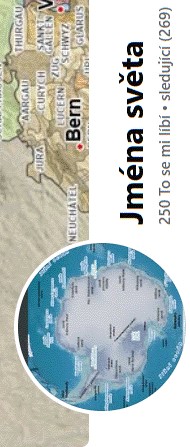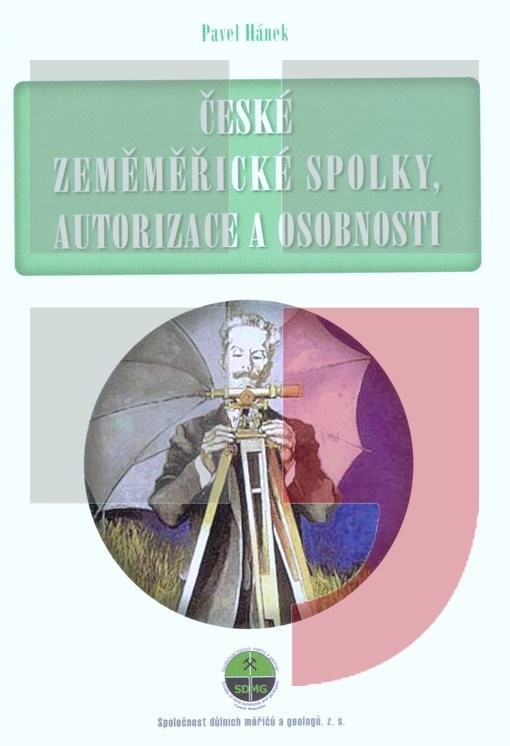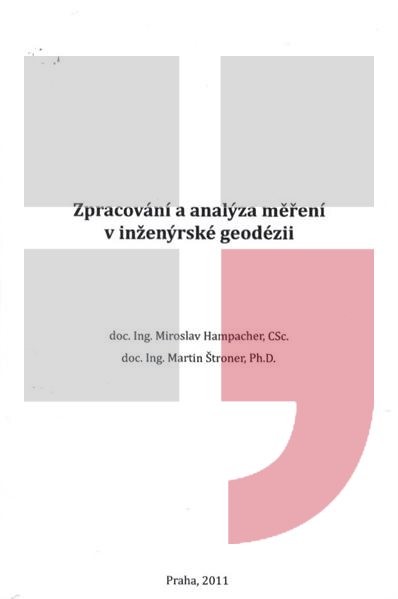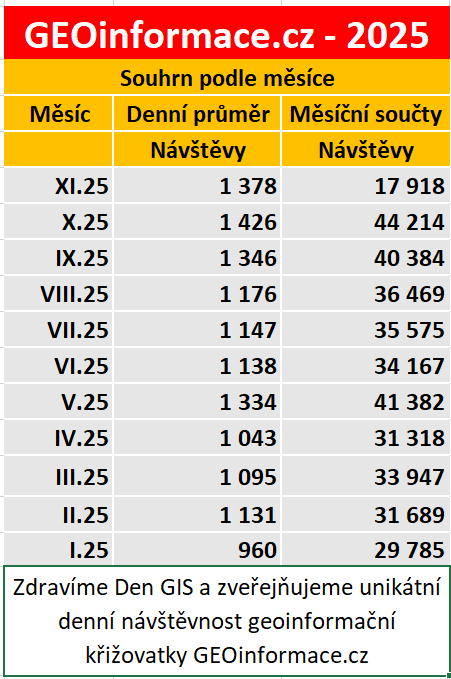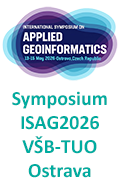zprávy
zdroje zpráv:Kratos Awarded $950 Million Multiple-Award, IDIQ Contract for U.S. Air Force Advanced Battle Management System (ABMS)
25.9.2020 16:32 GISCafe.com Webcasts-Webinars SAN DIEGO, Sept. 25, 2020 (GLOBE NEWSWIRE) -- Kratos Defense & Security Solutions, Inc. (Nasdaq: KTOS), a leading National Security Solutions …Fortem Technologies Announces Webinar with INTERPOL: Safely Defeating Urban Drone Threats
25.9.2020 16:32 GISCafe.com Webcasts-Webinars Pleasant Grove, Utah, Sept. 25, 2020 (GLOBE NEWSWIRE) -- Fortem Technologies, a leader in airspace security and defense for detecting and …New Aerial Surveillance Capabilities with IMSAR's NSP-7 Synthetic Aperture Radar on a Primoco UAV One 150
25.9.2020 16:32 GISCafe.com Webcasts-Webinars SPRINGVILLE, Utah, Sept. 25, 2020 — (PRNewswire) — IMSAR and Primoco UAV have successfully performed integration and preliminary …Spustili jsme nové webové stránky Hrdlička Holding
25.9.2020 15:44 Hrdlička Stránka spojující všechny naše společnosti v jeden celek.Ocenění pro prof. Pavla Proška
25.9.2020 13:10 Geografický ústav MUDne 25. září 2020 byla udělena Stříbrná pamětní medaile předsedy Senátu Miloše
Vystrčila prof. Proškovi.
Více informací zde:
https://senat.cz/zpravodajstvi/zprava.php?ke_dni=25.9.2020&O=12&id=3042&from=M
https://www.ceskatelevize.cz/porady/10997918455-mimoradne-porady-ct24/220411033330928-stribrne-medaile-senatu-pcr/
H2020 Green Deal Call: harnessing Galileo, EGNOS and Copernicus for a greener, smarter and more sustainable Europe
25.9.2020 11:47 European GNSS Agency
The Horizon 2020 Call “Building a low-carbon, climate resilient future: Research and innovation in support of the European Green Deal” with an overall indicative budget of € 983 million has just opened for submissions with a deadline on 26 January 2021. #EUSpace and its community of entrepreneurs and innovators have a key role to play in it, integrating space intelligence into the services and applications that will support Europe and the achievement of the Green Deal ambitious goals.
In recent years, EUSpace has enabled the creation, development and adoption of a wide range of services and applications to mitigate the environmental footprint and reduction of emissions, enhance the optimisation of resources, and improve the capacity to prevent and respond to crises.
Launched by the European Commission under the Green Deal Call, 11 thematic areas are looking for nothing less than future-proof solutions targeting a climate-neutral Europe by 2050:
Area 1: Increasing Climate Ambition: Cross sectoral challenges
Area 2: Clean, affordable and secure energy
Area 3: Industry for a clean and circular economy
Area 4: Energy and resource efficient buildings
Area 5: Sustainable and smart mobility
Area 6: Farm to Fork
Area 7: Biodiversity and ecosystem services
Area 8: Zero-pollution, toxic free environment
Area 9: Strengthening our knowledge in support of the European Green Deal
Area 10: Empowering citizens for the transition towards a climate neutral, sustainable Europe
Area 11: International cooperation
Some of the thematic areas with specific references to the use of satellites and EU’s flagship programmes Copernicus, Galileo and EGNOS include:
Area 1: Preventing and fighting extreme wildfires with the integration and demonstration of innovative means
The new context of extreme wildfires requires accelerating the shift towards implementing a more holistic fire management approach through research, demonstration and deployment of innovative means and methods tailored to extreme wildfire behaviour, such as better techniques, models, solutions and capabilities for preventing, predicting, monitoring and fighting wildfires, and mitigating their impact, including better technologies, equipment and decision support systems for first responders.
Area 4: Building and renovating in an energy and resource efficient way
With rising focus on the building sector in view of the full decarbonisation by 2050, the built environment remains a strategic domain for R&I. Proposals submitted in this area should target sustainable and highly energy-efficient building designs adapted to local environments and climatic conditions, including active-passive solutions for the building envelope, with digital and EGNSS-based methods of design and construction, smart monitoring and tracking of building and renovation processes (e.g. Building Information Modelling, digital twins and augmented reality, robotics, etc.)
Area 5: Sustainable and smart mobility - Green airports and ports as multimodal hubs for sustainable and smart mobility
In aviation, the area targets the application of innovative digital and EU satellite-based solutions, including new tools and traffic optimisation mechanisms for multimodal access, passenger and freight flows into and out of the airport, as well as between airports, facilitating airport access and reducing traffic from/to the city or other nodes.
In ports, it looks for pilot activities to showcase the positive environmental effects of digitalisation (incl. EU satellite-based solutions), particularly with clean (e.g. electrified/hydrogen) connected and automated vehicles and cranes, as well as intelligent port systems and dynamic vessel traffic flows for improved routing and scheduling, to minimise ship time at port, enabling efficient and automated logistics chains and multimodal inter-connections.
Read more: The Horizon 2020 EU Green Deal Call
Area 6: Farm to Fork - Testing and demonstrating systemic innovations in support of the Farm-to-Fork Strategy
Proposals are invited against “Testing and demonstrating systemic innovations in support of the Farm-to-Fork Strategy”, bringing forward the most appropriate mix of innovations, such as novel, digital and space-based technologies using EGNSS and Copernicus data and services, new business and supply-chain models, new governance models, ecological and social innovations while taking into account regional and sectoral contexts (environmental, socioeconomic, cultural) and needs, both for production and consumption.
Read more: A European Green Deal
The H2020 Call is inviting GNSS industry, entrepreneurs, SMEs, universities, organizations and public bodies to explore how synergies among the EU Space Programmes can enhance green solutions, more climate neutral results and increase Europe’s resilience. “We have only scratched the surface of what EU Space can do for a smarter, greener and more sustainable Europe” said Fiammetta Diani, GSA Head of Market Development, “the wealth of data and services provided by EU Space are key enablers in devising solutions for Europe’s future challenges and ambitions” she continued “we are looking forward to serving and supporting ideas and entrepreneurs that put sustainability at the core of innovation”.
A webinar to be held on 8th October, co-organised by the GSA and the European Commission will provide an overview of the call priorities and possible applications and areas that will be considered for funding out of the €983 million available.
You can also join the matchmaking sessions organised to introduce the Green Deal call for proposals, present insights and expectations whilst offering a unique international networking experience to forge the winning partnerships of the future.
Media note: This feature can be republished without charge provided the European GNSS Agency (GSA) is acknowledged as the source at the top or the bottom of the story. You must request permission before you use any of the photographs on the site. If you republish, we would be grateful if you could link back to the GSA website (http://www.gsa.europa.eu).
H2020 Green Deal Call: harnessing Galileo, EGNOS and Copernicus for a greener, smarter and more sustainable Europe
25.9.2020 11:47 European GNSS Agency
The Horizon 2020 Call “Building a low-carbon, climate resilient future: Research and innovation in support of the European Green Deal” with an overall indicative budget of € 983 million has just opened for submissions with a deadline on 26 January 2021. #EUSpace and its community of entrepreneurs and innovators have a key role to play in it, integrating space intelligence into the services and applications that will support Europe and the achievement of the Green Deal ambitious goals.
In recent years, EUSpace has enabled the creation, development and adoption of a wide range of services and applications to mitigate the environmental footprint and reduction of emissions, enhance the optimisation of resources, and improve the capacity to prevent and respond to crises.
Launched by the European Commission under the Green Deal Call, 11 thematic areas are looking for nothing less than future-proof solutions targeting a climate-neutral Europe by 2050:
Area 1: Increasing Climate Ambition: Cross sectoral challenges
Area 2: Clean, affordable and secure energy
Area 3: Industry for a clean and circular economy
Area 4: Energy and resource efficient buildings
Area 5: Sustainable and smart mobility
Area 6: Farm to Fork
Area 7: Biodiversity and ecosystem services
Area 8: Zero-pollution, toxic free environment
Area 9: Strengthening our knowledge in support of the European Green Deal
Area 10: Empowering citizens for the transition towards a climate neutral, sustainable Europe
Area 11: International cooperation
Some of the thematic areas with specific references to the use of satellites and EU’s flagship programmes Copernicus, Galileo and EGNOS include:
Area 1: Preventing and fighting extreme wildfires with the integration and demonstration of innovative means
The new context of extreme wildfires requires accelerating the shift towards implementing a more holistic fire management approach through research, demonstration and deployment of innovative means and methods tailored to extreme wildfire behaviour, such as better techniques, models, solutions and capabilities for preventing, predicting, monitoring and fighting wildfires, and mitigating their impact, including better technologies, equipment and decision support systems for first responders.
Area 4: Building and renovating in an energy and resource efficient way
With rising focus on the building sector in view of the full decarbonisation by 2050, the built environment remains a strategic domain for R&I. Proposals submitted in this area should target sustainable and highly energy-efficient building designs adapted to local environments and climatic conditions, including active-passive solutions for the building envelope, with digital and EGNSS-based methods of design and construction, smart monitoring and tracking of building and renovation processes (e.g. Building Information Modelling, digital twins and augmented reality, robotics, etc.)
Area 5: Sustainable and smart mobility - Green airports and ports as multimodal hubs for sustainable and smart mobility
In aviation, the area targets the application of innovative digital and EU satellite-based solutions, including new tools and traffic optimisation mechanisms for multimodal access, passenger and freight flows into and out of the airport, as well as between airports, facilitating airport access and reducing traffic from/to the city or other nodes.
In ports, it looks for pilot activities to showcase the positive environmental effects of digitalisation (incl. EU satellite-based solutions), particularly with clean (e.g. electrified/hydrogen) connected and automated vehicles and cranes, as well as intelligent port systems and dynamic vessel traffic flows for improved routing and scheduling, to minimise ship time at port, enabling efficient and automated logistics chains and multimodal inter-connections.
Read more: The Horizon 2020 EU Green Deal Call
Area 6: Farm to Fork - Testing and demonstrating systemic innovations in support of the Farm-to-Fork Strategy
Proposals are invited against “Testing and demonstrating systemic innovations in support of the Farm-to-Fork Strategy”, bringing forward the most appropriate mix of innovations, such as novel, digital and space-based technologies using EGNSS and Copernicus data and services, new business and supply-chain models, new governance models, ecological and social innovations while taking into account regional and sectoral contexts (environmental, socioeconomic, cultural) and needs, both for production and consumption.
Read more: A European Green Deal
The H2020 Call is inviting GNSS industry, entrepreneurs, SMEs, universities, organizations and public bodies to explore how synergies among the EU Space Programmes can enhance green solutions, more climate neutral results and increase Europe’s resilience. “We have only scratched the surface of what EU Space can do for a smarter, greener and more sustainable Europe” said Fiammetta Diani, GSA Head of Market Development, “the wealth of data and services provided by EU Space are key enablers in devising solutions for Europe’s future challenges and ambitions” she continued “we are looking forward to serving and supporting ideas and entrepreneurs that put sustainability at the core of innovation”.
A webinar was held in October, co-organised by the GSA and the European Commission, to provide an overview of the call priorities and possible applications and areas that will be considered for funding out of the €983 million available.
You can also join the matchmaking sessions organised to introduce the Green Deal call for proposals, present insights and expectations whilst offering a unique international networking experience to forge the winning partnerships of the future.
Media note: This feature can be republished without charge provided the European GNSS Agency (GSA) is acknowledged as the source at the top or the bottom of the story. You must request permission before you use any of the photographs on the site. If you republish, we would be grateful if you could link back to the GSA website (http://www.gsa.europa.eu).
Výběrové řízení - Inspektor/ka – právník Zeměměřického a katastrálního inspektorátu v Praze
25.9.2020 11:11 ČÚZK - předpisy a opatření Zeměměřický a katastrální inspektorát v Praze zveřejnil novou aktualitu: Oznámení o vyhlášení výběrového řízení na obsazení služebního místa Inspektor/ka – právník Zeměměřického a katastrálního inspektorátu v Praze (obor služby 55.)Inspektor – právník Zeměměřického a katastrálního inspektorátu v Praze (obor služby 55.)
25.9.2020 11:08 ČÚZK - volná místa Zeměměřický a katastrální inspektorát v Praze vypisuje výběrové řízení na místo Inspektor – právník Zeměměřického a katastrálního inspektorátu v Praze (obor služby 55.)Inspektor – právník Zeměměřického a katastrálního inspektorátu v Praze (obor služby 55.)
25.9.2020 11:08 ČÚZK - předpisy a opatření Zeměměřický a katastrální inspektorát v Prazevypisuje výběrové řízení na místo
Inspektor – právník Zeměměřického a katastrálního inspektorátu v Praze (obor služby 55.)
Inspektor – právník Zeměměřického a katastrálního inspektorátu v Praze (obor služby 55.)
25.9.2020 11:08 ČÚZK /Urady/Zememericke-a-katastralni-inspektoraty/Zememericke-a-katastralni-inspektoraty/Zememericky-a-katastralni-inspektorat-v-Praze/Uredni-deska/Oznameni-a-jina-uredni-sdeleni/Volna-mista/DMS/Inspektor-–-pravnik-Zememerickeho-a-katastralnihoTarawa, Kiribati
25.9.2020 10:00 ESA Observing the Earth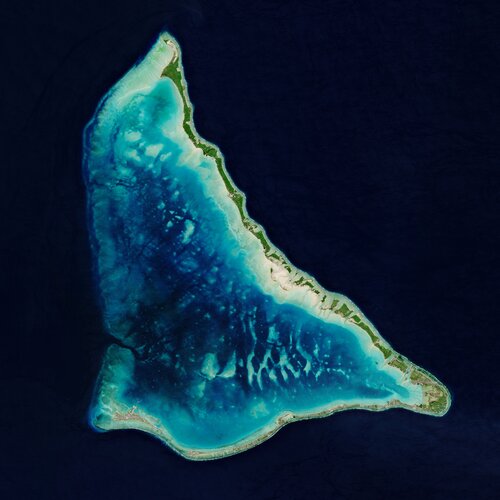 Image:
Copernicus Sentinel-2 takes us over the Tarawa Atoll in the Republic of Kiribati – a remote Pacific nation threatened by rising seas.
Image:
Copernicus Sentinel-2 takes us over the Tarawa Atoll in the Republic of Kiribati – a remote Pacific nation threatened by rising seas.
Earth from Space: Tarawa, Kiribati
25.9.2020 10:00 ESA Observing the Earth Video:
00:03:27
Video:
00:03:27
In this week's edition of the Earth from Space programme, Copernicus Sentinel-2 takes us over the Tarawa Atoll in the Republic of Kiribati – a remote Pacific nation threatened by rising seas.
See also Tarawa, Kiribati to download the image.
SEOSAT-Ingenio arrives in French Guiana
25.9.2020 9:30 ESA Observing the Earth
After leaving the Airbus premises in Madrid on 24 September, the Spanish high-resolution land imaging mission, known as SEOSAT-Ingenio, has arrived safely at Europe’s Spaceport in French Guiana, where it will be prepared for launch later this year.
SES Becomes Microsoft Azure Orbital Founding Connectivity Partner
25.9.2020 9:00 GISCafe.com Webcasts-Webinars SES’s proven low-latency MEO managed services to be part of Microsoft’s new multi-orbit satellite connectivity integrated with Azure, …Satellite Imagery Specialist 4 Earth Intelligence Appoints Managing Director
25.9.2020 9:00 GISCafe.com Webcasts-Webinars Bristol, UK, 22 September 2020 - 4 Earth Intelligence (4EI), an international earth observation company, has appointed Mariam Crichton to the role of …thinkWhere Field Mapping Tech Reaps Rewards for Scotland’s Rural College
25.9.2020 9:00 GISCafe.com Webcasts-Webinars Stirling, Scotland, 24 September 2020 - thinkWhere has delivered a field-to-desk GIS solution for Scotland’s Rural College (SRUC). Working with …INDEX INSURANCE POWERED BY GEOSPATIAL INTELLIGENCE
25.9.2020 9:00 GISCafe.com Webcasts-Webinars September 22, 2020 -- Skyline Partners and Gisaïa announce their strategic partnership and the launch of Insdex, Skyline’s index insurance …Změna úředních hodin
25.9.2020 8:14 ČÚZK - předpisy a opatření Katastrální úřad pro Liberecký kraj zveřejnil novou aktualitu: Od 1.10.2020 se mění úřední hodiny na KÚ pro Liberecký kraj, KP Liberec, KP Česká Lípa, KP Frýdlant, KP Semily a KP Jablonec n.N. takto:| pondělí: | 8:00 - 17:00 |
|---|---|
| úterý: | 8:00 - 14:00 |
| středa: | 8:00 - 17:00 |
| čtvrtek: | 8:00 - 14:00 |
| pátek: | 8:00 - 12:00 |
Pobočka Bruntál je dočasně uzavřena veřejnosti
25.9.2020 0:00 Státní pozemkový úřad Dovolujeme si Vám oznámit, že z provozně technických důvodů je pro veřejnost dočasně uzavřena pobočka Bruntál. Veškerá vaše podání budou vyřizována elektronicky. Omezení platí do odvolání. O znovuotevření pobočky vás budeme neprodleně informovat. Děkujeme za pochopení.Pobočka Tábor je pro veřejnost již otevřena
25.9.2020 0:00 Státní pozemkový úřad Dovolujeme si Vám oznámit, že pobočka Tábor je opět pro veřejnost otevřena. Omlouváme se za nepříjemnosti, které Vám uzavřením pobočky vznikly a děkujeme za pochopení.Pobočka Bruntál je dočasně uzavřena veřejnosti
25.9.2020 0:00 Státní pozemkový úřad Dovolujeme si Vám oznámit, že z provozně technických důvodů je pro veřejnost dočasně uzavřena pobočka Bruntál. Veškerá vaše podání budou vyřizována elektronicky. Omezení platí do odvolání. O znovuotevření pobočky vás budeme neprodleně informovat. Děkujeme za pochopení.Pobočka Tábor je pro veřejnost již otevřena
25.9.2020 0:00 Státní pozemkový úřad Dovolujeme si Vám oznámit, že pobočka Tábor je opět pro veřejnost otevřena. Omlouváme se za nepříjemnosti, které Vám uzavřením pobočky vznikly a děkujeme za pochopení.NSGIC Announces New Board Members; New York State’s, Frank Winters takes over as President
24.9.2020 23:33 GISCafe.com Webcasts-Webinars September, 24, 2020, New Orleans, LA - National States Geographic Information Council (NSGIC) announces the appointment of five new members to its …5x5 Technologies Lands Investment from Safar Partners
24.9.2020 21:38 GISCafe.com Webcasts-Webinars Partnership will accelerate innovation and provide strategic guidance to the companyST. PETERSBURG, Fla., Sept. 24, 2020 — (PRNewswire) …
ARCOS Supports MultiSpeak Tech Spec to Help Utility Munis, Co-ops
24.9.2020 19:45 GISCafe.com Webcasts-Webinars ARCOS's support for MultiSpeak gives utilities a way to easily link ARCOS's solutions to enterprise software solutions for work management, outage …Esri and AfroChampions Launch Partnership to Promote GIS in Africa
24.9.2020 17:39 GISCafe.com Webcasts-Webinars Pan-African Nonprofit and Esri Join to Encourage Geospatial Technology Use Across ContinentREDLANDS, Calif. — (BUSINESS WIRE) — …
Pushpin identifies $983M in property changes for Cook County, Illinois
24.9.2020 17:39 GISCafe.com Webcasts-Webinars Pushpin leverages deep learning to increase accuracy and speed deliveryMINNEAPOLIS, Sept. 24, 2020 — (PRNewswire) —
MINNEAPOLIS, …
HCSS Launches a New Version of HCSS Aerial
24.9.2020 17:39 GISCafe.com Webcasts-Webinars Trusted leader for construction software solutions, HCSS adds new features to HCSS Aerial, a drone-based data analytics platformHOUSTON, Sept. 24, …
Interview with Brad Schmidt, Global UAV Sales Manager, Applanix
24.9.2020 17:02 GISCafe.com Webcasts-WebinarsBluesky LiDAR Maps Help English Landscape Archaeologists
24.9.2020 16:46 GISCafe.com Webcasts-Webinars Leicestershire, UK, 24 September 2020 – Aircraft mounted lasers are helping to reveal the rich archaeology within Cranborne Chase Area of …BlackSky Announces Next Generation Dual Payload Satellite Architecture to Deliver High Resolution and Nighttime Imaging Capabilities
24.9.2020 16:46 GISCafe.com Webcasts-Webinars U.S. Army and Defense Innovation Unit to leverage new satellite design for Tactical GEOINT programHERNDON, Va. — (BUSINESS WIRE) — …
Accela Announces Keynote Presenters and Engaging Line-up for Highly Interactive Virtual Accelarate 2020
24.9.2020 16:46 GISCafe.com Webcasts-Webinars Microsoft Executive Director of State and Local Government Solutions Kim Nelson, acclaimed documentary filmmaker Brett Culp, and Accela CEO Gary …Blighter launch pioneering drone-seeking A800 3D Drone Detection Radar
24.9.2020 16:46 GISCafe.com Webcasts-Webinars CAMBRIDGE, England, Sept. 24, 2020 — (PRNewswire) — Blighter Surveillance Systems (www.blighter.com) the British designer and …Arturo Joins Open Geospatial Consortium Community to Collaborate and Innovate with Other Industry Leaders
24.9.2020 16:46 GISCafe.com Webcasts-Webinars —Community shapes the future of location technologies—CHICAGO — (BUSINESS WIRE) — September 24, 2020 —
Arturo, provider of …
Draganfly Selected as Sole Provider of Smart Vital Sign and Social Distancing Equipment
24.9.2020 16:46 GISCafe.com Webcasts-Webinars Los Angeles, California, Sept. 24, 2020 (GLOBE NEWSWIRE) -- Draganfly Inc. (OTCQB: DFLYF) (CSE: DFLY) (FSE: 3U8) (“Draganfly” or the …Baltimore County Goes Live with Cityworks AMS Project, Implemented Virtually by Woolpert
24.9.2020 16:46 GISCafe.com Webcasts-Webinars An initial strategic assessment is serving as the foundation for a successful, phased approach to asset management.TOWSON, Md., Sept. 24, 2020 …
5. porada vedení firem skupiny HRDLIČKA Holding
24.9.2020 15:15 Hrdlička V říjnu se konala 5. porada vedení firem skupiny HRDLIČKA Holding, kterou hostila..Mapa roku 2019: úspěch našeho studenta [Katedra aplikované geoinformatiky a kartografie, byTopic]
24.9.2020 15:00 Katedra aplikované geoinformatiky a kartografie Přf UK Diplomová práce Otomara Gottsteina "Generalizace zástavby s využitím typifikace" obhájená na katedře aplikované geoinformatiky a kartografie vyhrála v soutěži Mapa roku 2019. Gratulujeme!5. porada vedení firem skupiny HRDLIČKA Holding
24.9.2020 13:28 Hrdlička V říjnu se konala 5. porada vedení firem holdingu HRDLIČKA Group, kterou hostila..Celofiremní školení v hotelu Medlov na Vysočině
24.9.2020 13:19 Hrdlička Letošní školení v rámci firem Hrdlička Holding proběhlo v zasněžené oblasti..Odborný referent / vrchní referent v oddělení aktualizace katastru nemovitostí Katastrálního pracovi
24.9.2020 13:00 ČÚZK - předpisy a opatření Katastrální úřad pro Královéhradecký kraj - Katastrální pracoviště Hradec Královévypisuje výběrové řízení na místo
Odborný referent / vrchní referent v oddělení aktualizace katastru nemovitostí Katastrálního pracoviště Hradec Králové
Odborný referent / vrchní referent v oddělení aktualizace katastru nemovitostí Katastrálního pracovi
24.9.2020 13:00 ČÚZK - volná místa Katastrální úřad pro Královéhradecký kraj - Katastrální pracoviště Hradec Králové vypisuje výběrové řízení na místo Odborný referent / vrchní referent v oddělení aktualizace katastru nemovitostí Katastrálního pracoviOdborný referent / vrchní referent v oddělení aktualizace katastru nemovitostí Katastrálního pracovi
24.9.2020 13:00 ČÚZK /Urady/Katastralni-urady/Katastralni-urady/Katastralni-urad-pro-Kralovehradecky-kraj/Uredni-deska/Oznameni-a-jina-uredni-sdeleni/Volna-mista/Odborny-referent-vrchni-referent-v-oddeleni-aktuZmena_urednich_hodin
24.9.2020 12:40 ČÚZK /Urady/Katastralni-urady/Katastralni-urady/Katastralni-urad-pro-Stredocesky-kraj/Katastralni-pracoviste/KP-Kolin/Zmena_urednich_hodinZmena_urednich_hodin
24.9.2020 12:40 ČÚZK - předpisy a opatření Katastrální úřad pro Středočeský kraj - Katastrální pracoviště Kolín zveřejnil novou aktualitu:Úterý: 8 - 14 hod.
Středa: 8 - 17 hod.
Čtvrtek: 8 - 14 hod.
Pátek: 8 - 12 hod.
Uzavření KP Chomutov
24.9.2020 12:01 ČÚZK /Urady/Katastralni-urady/Katastralni-urady/Katastralni-urad-pro-Ustecky-kraj/Katastralni-pracoviste/KP-Chomutov/O-uradu/Aktuality/Uzavreni-KP-ChomutovUzavření KP Chomutov
24.9.2020 12:01 ČÚZK - předpisy a opatření Katastrální úřad pro Ústecký kraj - Katastrální pracoviště Chomutov zveřejnil novou aktualitu:! Uzavření Katastrálního
pracoviště Chomutov !
Dne 30.09.2020 bude Katastrální
pracoviště Chomutov cca do 9 hodin
z technických důvodů uzavřeno
(odstávka elektrické energie).
Děkujeme za pochopení.
Představujeme DAEX DESIGN 21
24.9.2020 11:21 ŠPINAR - softwareVážení zákazníci, dovolujeme si Vám nabídnout novou verzi programu DAEX DESIGN 21 CZ pro nábytkáře a interiérové studia ve verzích Start, Standard, Plus a Professional. Hlavním produktem této rodiny je DAEX DESIGN Professional 21 Program je určen pro střední a větší nábytkářské, interiérové a truhlářské společnosti. DAEX DESIGN Professional je nejsilnějším produktem v řadě DAEX DESIGN, který spojuje špičkovou grafiku pro tvorbu...Read more
The post Představujeme DAEX DESIGN 21 appeared first on ŠPINAR – software.
Představujeme DAEX DESIGN 21
24.9.2020 11:21 ŠPINAR - software Vážení zákazníci, dovolujeme si Vám nabídnout novou verzi programu DAEX DESIGN 21 CZ pro nábytkáře a interiérové studia ve verzích Start, Standard, Plus a Professional. Hlavním produktem této rodiny je DAEX DESIGN Professional 21 Program je určen pro střední a větší nábytkářské, interiérové a truhlářské společnosti. DAEX DESIGN Professional je nejsilnějším produktem v řadě DAEX DESIGN, který spojuje špičkovou grafiku pro tvorbu...Read moreVrchní referent/rada v oddělení aktualizace GI KN na Katastrálním pracovišti Brno - venkov
24.9.2020 11:13 ČÚZK - volná místa Katastrální úřad pro Jihomoravský kraj Katastrální pracoviště Brno-venkov vypisuje výběrové řízení na místo Vrchní referent/rada v oddělení aktualizace GI KN na Katastrálním pracovišti Brno - venkovVrchní referent/rada v oddělení aktualizace GI KN na Katastrálním pracovišti Brno - venkov
24.9.2020 11:13 ČÚZK /Urady/Katastralni-urady/Katastralni-urady/Katastralni-urad-pro-Jihomoravsky-kraj/Uredni-deska/Oznameni-a-jina-uredni-sdeleni/Volna-mista/DMS/Vrchni-referent-rada-v-oddeleni-aktualizace-GI-KNVrchní referent/rada v oddělení aktualizace GI KN na Katastrálním pracovišti Brno - venkov
24.9.2020 11:13 ČÚZK - předpisy a opatření Katastrální úřad pro Jihomoravský kraj Katastrální pracoviště Brno-venkovvypisuje výběrové řízení na místo
Vrchní referent/rada v oddělení aktualizace GI KN na Katastrálním pracovišti Brno - venkov
Představujeme výsledky soutěže Mapa roku 2019
24.9.2020 11:11 Česká kartografická společnost Česká kartografická společnost v letošním roce uspořádala 22. ročník soutěže Mapa roku. Odborná komise na svém červnovém zasedání zhodnotila přihlášená kartografická díla vydaná na území České republiky v roce 2019 a určila nominace a vítěze v jednotlivých kategoriích. Vzhledem k tomu, že slavnostní vyhlášení výsledků se ruší, přinášíme Vám výsledky touto formou. Slavnostní vyhlášení výsledků soutěže mělo proběhnout […]POZOR Slavnostní vyhlášení ocenění Mapa roku 2019 se ruší
24.9.2020 11:08 Česká kartografická společnost Vzhledem k panujícím protipandemickým opatřením a s ohledem na bezpečnost všech zúčastněných jsme přistoupili k rozhodnutí zrušit Slavnostní vyhlášení výsledků soutěže Mapa roku 2019, a to bez náhrady. Výsledky soutěže jsou uveřejněny na webových stránkách soutěže. Jako náhradu za slavnostní vyhlášení připravíme v následujících týdnech video, kde zprostředkujeme reakce oceněných. Děkujeme za pochopení.POZOR Slavnostní vyhlášení Mapa roku 2019 se ruší
24.9.2020 11:08 Česká kartografická společnost Vzhledem k panujícím protipandemickým opatřením a s ohledem na bezpečnost všech zúčastněných jsme přistoupili k rozhodnutí zrušit Slavnostní vyhlášení výsledků soutěže Mapa roku 2019, a to bez náhrady. Výsledky soutěže jsou uveřejněny na webových stránkách soutěže. Jako náhradu za slavnostní vyhlášení připravíme v následujících týdnech video, kde zprostředkujeme reakce oceněných. Děkujeme za pochopení.European Space Week 2020: Mark your calendars!
24.9.2020 10:54 European GNSS Agency
The top EU Space Conference will be on your screens from 7 to 11 December 2020. Held under the auspices of the German Presidency of the European Union, EU Space Week 2020 will be packed full of exciting events ranging from plenary sessions, keynotes, discussions and conference sessions, competition awards ceremonies, and much more. So, gear up and save the date!
As in previous years, European Space Week 2020 will address space-related topics engaging the entire European Space community, from policy-makers and start-ups to public authorities and industry players, and from investors to users. With its unique blend of plenaries, panel discussions, programme status updates, and virtual networking opportunities, European Space Week is a not-to-be-missed event for anybody interested in the current challenges and future trends of the EU Space ecosystem.
What to expect
This year’s European Space Week will focus on how the EU Space Programme is contributing to achieving the European Commission’s priorities for 2019-2024, with sessions on the European Green Deal, the EU Space Programme and an economy that works for people, the EU Space Programme and a Europe fit for the digital age, and others. With space having a positive multiplier effect in the EU economy, particular focus will be put on how synergies among Galileo, EGNOS, Copernicus and GovSatCom can foster innovation, growth and sustainability. For communications enthusiasts and digital media lovers, a session on how to effectively communicate about the #EUSpace Programme will be led by top tech-influencers.
The fast-growing #EUSpace user’ community will present their needs and requirements during the User Consultation Platform plenary as a unique opportunity to influence and shape the services and future evolutions of the space programme’s components.
Don’t miss out
Sign up here to be notified when the official registration opens. Don’t miss Europe’s no. 1 space event, to discover cutting-edge Galileo, EGNOS and Copernicus applications and hear from award-winning entrepreneurs, start-ups and visionaries. The event will also feature investors’ fora and business matchmaking, one to one networking opportunities with decision-makers, innovators and industry leaders, and virtual exhibitions.
Media note: This feature can be republished without charge provided the European GNSS Agency (GSA) is acknowledged as the source at the top or the bottom of the story. You must request permission before you use any of the photographs on the site. If you republish, we would be grateful if you could link back to the GSA website (http://www.gsa.europa.eu).
Státní svátek 28.9. [Knihovna geografie, byTopic]
24.9.2020 9:20 Katedra aplikované geoinformatiky a kartografie Přf UK V pondělí 28.9. bude knihovna z důvodu státního svátku uzavřena!Zářijový mapathon v Praze bude!
24.9.2020 8:57 GISportal.cz
Přijďte a podpořte práci humanitárních organizací tím, že pomůžete zmapovat místa, která jsou nejvíce ohrožena krizemi. Mapathon se bude konat 29. září od 18:30 do 20:30 v coworkingu Opero.
The post Zářijový mapathon v Praze bude! appeared first on GISportal.cz.
Jihomoravský kraj nově nabízí službu UtilityReport
24.9.2020 8:37 Hrdlička Dne 21. 9. 2020 byl spuštěn veřejný přístup ve službě UtilityReport pro Jihomoravský kraj.Satnav loss might shut down sea, warns ESA-backed study
24.9.2020 8:37 ESA Navigation
Satellite navigation is precise, reliable and available continuously around the globe, but overreliance on it presents a clear and present danger to the smooth passage of maritime trade, concludes a major ESA-backed study.
Satnav loss might shut down sea, warns ESA-backed study
24.9.2020 8:37 ESA Navigation
Satellite navigation is precise, reliable and available continuously around the globe, but overreliance on it presents a clear and present danger to the smooth passage of maritime trade, concludes a major ESA-backed study.
Geofest 2020 – pozvánka
24.9.2020 8:04 ZeměměřičVe dnech 13. až 16. října se ve čtyřech městech uskuteční Geofest 2020. Společnost 3gon Positioning pořádá v Praze, Plzni, Brně a Ostravě představení aktuálních technologií značek SOKKIA, GeoSLAM, Nivel System, Senceive a dalších. Zajímavé na akci je představení možností pro celou řadu oborů v souvislostech- BIM, geodézii, stavebnictví a geomatiku obecně. Detaily o akci zde
The post Geofest 2020 – pozvánka appeared first on Zeměměřič.
Geofest 2020 – pozvánka
24.9.2020 8:04 ZeměměřičVe dnech 13. až 16. října se ve čtyřech městech uskuteční Geofest 2020. Společnost 3gon Positioning pořádá v Praze, Plzni, Brně a Ostravě představení aktuálních technologií značek SOKKIA, GeoSLAM, Nivel System, Senceive a dalších. Zajímavé na akci je představení možností pro celou řadu oborů – BIM, geodézii, stavebnictví a geomatiku obecně. Detaily o akci zde
The post Geofest 2020 – pozvánka appeared first on Zeměměřič.
Pobočka Tábor je dočasně uzavřena veřejnosti
24.9.2020 0:00 Státní pozemkový úřad Dovolujeme si Vám oznámit, že z provozně technických důvodů je pro veřejnost uzavřena pobočka Tábor. Veškerá vaše podání budou vyřizována elektronicky. Omezení platí do odvolání. O znovuotevření pobočky vás budeme neprodleně informovat. Děkujeme za pochopení.Pobočka Tábor je dočasně uzavřena veřejnosti
24.9.2020 0:00 Státní pozemkový úřad Dovolujeme si Vám oznámit, že z provozně technických důvodů je pro veřejnost uzavřena pobočka Tábor. Veškerá vaše podání budou vyřizována elektronicky. Omezení platí do odvolání. O znovuotevření pobočky vás budeme neprodleně informovat. Děkujeme za pochopení.Pobočka Tábor je dočasně uzavřen veřejnosti
24.9.2020 0:00 Státní pozemkový úřad Dovolujeme si Vám oznámit, že z provozně technických důvodů je pro veřejnost uzavřena pobočka Tábor. Veškerá vaše podání budou vyřizována elektronicky. Omezení platí do odvolání. O znovuotevření pobočky vás budeme neprodleně informovat. Děkujeme za pochopení.Pobočka Tábor je dočasně uzavřena veřejnosti
24.9.2020 0:00 Státní pozemkový úřad Dovolujeme si Vám oznámit, že z provozně technických důvodů je pro veřejnost uzavřena pobočka Tábor. Veškerá vaše podání budou vyřizována elektronicky. Omezení platí do odvolání. O znovuotevření pobočky vás budeme neprodleně informovat. Děkujeme za pochopení.2020 Geospatial Excellence Awards Announced
23.9.2020 21:33 GISCafe.com Webcasts-Webinars National States Geographic Information Council (NSGIC) President Karen Rogers (WY) led a celebration of the 2020 Geospatial Excellence Awards during …Verizon deploys remote network-connected drone during Big Hollow Wildfire
23.9.2020 19:36 GISCafe.com Webcasts-Webinars PORTLAND, Ore., Sept. 23, 2020 (GLOBE NEWSWIRE) -- The Federal Aviation Administration (FAA) granted Skyward, A Verizon company, a temporary waiver …Matternet Expands Operations to Asia Through Drone Delivery Partnership with Japan Airlines
23.9.2020 17:43 GISCafe.com Webcasts-Webinars Matternet M2 drone system to be deployed in Tokyo's new "drone logistics project", and utilized to assess drone delivery opportunities in …SmartyStreets Introduces Hyper-Accurate US Rooftop Geocoding and US Reverse Geocoding
23.9.2020 17:43 GISCafe.com Webcasts-Webinars PROVO, Utah, Sept. 22, 2020 — (PRNewswire) — SmartyStreets, the leader in location data intelligence, announces the release of …Bentley Systems Announces Pricing of Initial Public Offering
23.9.2020 17:43 GISCafe.com Webcasts-Webinars EXTON, Pa. — (BUSINESS WIRE) — September 22, 2020 —Bentley Systems, Incorporated (“Bentley”) today announced the pricing of …
LeddarTech’s 180-Degree Solid-State LiDAR Sensor, the Leddar Pixell, Receives the Outstanding & Innovative Product Award by the Shenzhen Automotive Electronics Industry Association
23.9.2020 17:43 GISCafe.com Webcasts-Webinars QUEBEC CITY, Sept. 23, 2020 (GLOBE NEWSWIRE) -- LeddarTech®, a leader in Level 1 to Level 5 ADAS and AD sensing technology, is pleased to announce …Bitfocus partners with the City of Long Beach in the overhaul of local homeless data system
23.9.2020 17:43 GISCafe.com Webcasts-Webinars Clarity Human Services to serve as the new Homeless Management Information System (HMIS) for the Continuum of Care (CoC)LONG BEACH, Calif., Sept. …
sensemetrics Announces Integration with Topcon Positioning Group to Advance IIoT Monitoring in Geospatial, Construction and Infrastructure Markets
23.9.2020 17:43 GISCafe.com Webcasts-Webinars Alignment gives access to sensemetrics productivity tools and real-time data insights to elevate risk mitigation and safety management programsSAN …
HawkEye 360 Among Top Teams to Participate in AFWERX DoD Commercial Space Partnerships Challenge and EngageSpace
23.9.2020 17:43 GISCafe.com Webcasts-Webinars HERNDON, Va., Sept. 23, 2020 — (PRNewswire) — AFWERX, the catalyst for fostering innovation within the U.S. Air Force, …United Launches Online 'Map Search' Feature, A First Among U.S. Airlines
23.9.2020 17:43 GISCafe.com Webcasts-Webinars Digital tool lets travelers see a map-view of multiple destinations at once filtered by price, destination type, travel preferences or departure …Aktualizováno: Revize v souvislosti s geometrickými plány. Pozvánka na seminář ČSGK
23.9.2020 14:47 ZeměměřičV pátek 23. října 2020 se v Praze na Novotného lávce (kongresový sál č. 319, Novotného lávka 5, Praze 1) uskuteční odborný seminář, věnovaný revizím katastru nemovitostí. Akci s názvem Revize v souvislosti s geometrickými plány pořádá Český svaz geodetů a kartografů. Aktualizováno 23. 9.: Rada svazu rozhodla, že vzhledem k situaci s covid-19 se seminář nakonec konat nebude a bude přesunut na jaro […]
The post Aktualizováno: Revize v souvislosti s geometrickými plány. Pozvánka na seminář ČSGK appeared first on Zeměměřič.
inspektor / odborný rada
23.9.2020 10:37 ČÚZK - volná místa Zeměměřický a katastrální inspektorát v Pardubicích vypisuje výběrové řízení na místo inspektor / odborný radainspektor / odborný rada
23.9.2020 10:37 ČÚZK - předpisy a opatření Zeměměřický a katastrální inspektorát v Pardubicíchvypisuje výběrové řízení na místo
inspektor / odborný rada
inspektor / odborný rada
23.9.2020 10:37 ČÚZK /Urady/Zememericke-a-katastralni-inspektoraty/Zememericke-a-katastralni-inspektoraty/Zememericky-a-katastralni-inspektorat-v-Pardubicic/Uredni-deska/Oznameni-a-jina-uredni-sdeleni/Volna-mista/DMS/inspektor-odborny-radaodborný referent – zápisy v řízení V a Z, Katastrální pracoviště Prostějov
23.9.2020 10:13 ČÚZK /Urady/Katastralni-urady/Katastralni-urady/Katastralni-urad-pro-Olomoucky-kraj/Uredni-deska/Oznameni-a-jina-uredni-sdeleni/Volna-mista/odborny-referent-–-zapisy-v-rizeni-V-a-Z,-Katastraodborný referent – zápisy v řízení V a Z, Katastrální pracoviště Prostějov
23.9.2020 10:13 ČÚZK - předpisy a opatření Katastrální úřad pro Olomoucký kraj - Katastrální pracoviště Prostějovvypisuje výběrové řízení na místo
odborný referent – zápisy v řízení V a Z, Katastrální pracoviště Prostějov
odborný referent – zápisy v řízení V a Z, Katastrální pracoviště Prostějov
23.9.2020 10:13 ČÚZK - volná místa Katastrální úřad pro Olomoucký kraj - Katastrální pracoviště Prostějov vypisuje výběrové řízení na místo odborný referent – zápisy v řízení V a Z, Katastrální pracoviště ProstějovKartografické listy budou indexovány na SCOPUS
23.9.2020 9:08 Česká kartografická společnost Skvělá zpráva přišla z redakční rady časopisu Kartografické listy. Během krátké doby bude časopis zařazen pro indexování do databáze SCOPUS. Po dvouletém úsilí, kdy byl časopis sledován, byla prokázána jeho kvalita. Gratulujeme a těšíme se na další čísla!Mapy.cz o nové snímky pro Karlovarský, Ústecký, Liberecký, Plzeňský, Středočeský kraj a Prahu.
23.9.2020 8:56 GISportal.cz
Mapy.cz aktualizovaly své pokrytí leteckými snímky a zveřejnily ve svých mapách nové snímky pro Karlovarský, Ústecký, Liberecký, Plzeňský, Středočeský kraj a Prahu. Aktualizace platí jak pro webový prohlížeč, tak pro mobilní aplikace. Nová letecká mapa je také dostupná v rámci mapového API pro firmy a vývojáře. Zbytek republiky se bude snímkovat v následujícím roce. Snímky […]
The post Mapy.cz o nové snímky pro Karlovarský, Ústecký, Liberecký, Plzeňský, Středočeský kraj a Prahu. appeared first on GISportal.cz.
Pronájmy pozemků i hrobových míst mohou obce a města řešit přímo v mapové aplikaci Gisonline.cz (TZ)
23.9.2020 8:22 GISportal.cz
Pronájmy obecních pozemků či hrobových míst jsou pro města a obce náročnou agendou. Dohledávání údajů z katastru, papírová evidence údajů a vypisování smluv, to vše úředníkům zabírá spoustu času. Administrativu si přitom nově mohou výrazně ušetřit s mapovou aplikací Gisonline.cz. Ta jim umožní správu smluv přímo nad mapou včetně přístupu do katastru nemovitostí a k dalším nezbytným údajům. […]
The post Pronájmy pozemků i hrobových míst mohou obce a města řešit přímo v mapové aplikaci Gisonline.cz (TZ) appeared first on GISportal.cz.
Bentley Systems Announces Pricing of Initial Public Offering
23.9.2020 1:30 Bentley Systems EXTON, Pa., U.S.A. – September 22, 2020 – Bentley Systems, Incorporated (“Bentley”) today announced the pricing of the initial public offering of 10,750,000 shares of its Class B common stock at a price to the public of $22.00 per share. The shares of Class B common stock to be sold in the offering are being sold by existing stockholders of Bentley. The selling stockholders granted the underwriters in the offering a 30-day option to purchase up to an additional 1,610,991 shares of Class B common stock from the selling stockholders. The shares are expected to begin trading on the Nasdaq Global Select Market on September 23, 2020 under the symbol “BSY”. The offering is expected to close on September 25, 2020, subject to customary closing conditions.Goldman Sachs & Co. LLC and BofA Securities are acting as lead book-running managers and RBC Capital Markets is acting as a book-running manager for the offering. Baird, KeyBanc Capital Markets and Mizuho Securities are acting as co-managers for the offering.
A registration statement on Form S-1 relating to the offering has been filed with, and declared effective by, the SEC. Copies of the registration statement can be accessed through the SEC’s website at www.sec.gov. This press release does not constitute an offer to sell or the solicitation of an offer to buy any securities, and shall not constitute an offer, solicitation, or sale in any jurisdiction in which such offer, solicitation, or sale would be unlawful prior to registration or qualification under the securities laws of that jurisdiction. Any offers, solicitations or offers to buy, or any sales of securities will be made in accordance with the registration requirements of the Securities Act of 1933, as amended.
The offering is being made only by means of a prospectus. Copies of the prospectus related to the offering, when available, may be obtained by contacting Goldman Sachs & Co. LLC, Attention: Prospectus Department at 200 West Street, New York, New York 10282, by telephone at 1-866-471-2526 or by e-mail at prospectus-ny@ny.email.gs.com, or BofA Securities, Attn: Prospectus Department, NC1-004-03-43, 200 North College Street, 3rd floor, Charlotte, North Carolina 28255-0001, by email at dg.prospectus_requests@bofa.com.
Forward Looking Statements
This press release contains forward-looking statements. Forward-looking statements include all statements that are not historical facts. The words “believe,” “may,” “will,” “estimate,” “continue,” “anticipate,” “intend,” “expect” and similar expressions are intended to identify forward-looking statements. These forward-looking statements include any statements regarding the commencement of trading of Bentley’s Class B common stock on the Nasdaq Global Select Market and the closing of the offering. These forward-looking statements are subject to a number of risks, uncertainties and assumptions, including those described under “Risk Factors” under Bentley’s registration statement relating to the offering. Except as required by law, Bentley has no obligation to update any of these forward-looking statements to conform these statements to actual results or revised expectations.
Terracon Acquires Environmental Planning Group of Phoenix
22.9.2020 19:48 GISCafe.com Webcasts-Webinars Builds on environmental planning, design and resource specialists' depth in Southwest, Western U.S.OLATHE, Kan., Sept. 22, 2020 — (PRNewswire) …
City Of Oakland Park Harnesses The Economic Power Of Its Community
22.9.2020 19:48 GISCafe.com Webcasts-Webinars OPCRA & The City of Oakland Park has spearheaded the roll out of an exciting new campaign called "Find it in Oakland Park" to support local …Sonin Hybrid unveils revolutionary 140mph+ drone built exclusively for first responders
22.9.2020 19:48 GISCafe.com Webcasts-Webinars The Sonin Hybrid Recruit drone is built with a fully-equipped flight time over three hours and can reach speeds over three times faster than most of …Seminář přesunut, výstava bude. Příští rok se tedy na semináři oslaví 301 let od vzniku Müllerovy mapy Čech
22.9.2020 19:30 ZeměměřičOrganizátoři semináře k výročí 300 let Müllerovy mapy oznámili, že “současný stav spojený s koronavirem neumožňuje uspořádat plnohodnotný seminář v Národním technickém muzeu. Po dohodě pořadatelů bylo rozhodnuto přesunout konání semináře na pozdější dobu. Pokud to bude možné, tak na jaro příštího roku. O termínu konání semináře budete včas informováni.” Výstava 300 let Müllerovy mapy se bude konat v NTM ve […]
The post Seminář přesunut, výstava bude. Příští rok se tedy na semináři oslaví 301 let od vzniku Müllerovy mapy Čech appeared first on Zeměměřič.
Crop Production Forecasts for Corn and Soybeans Now Available from Barchart
22.9.2020 17:28 GISCafe.com Webcasts-Webinars CHICAGO, Sept. 22, 2020 — (PRNewswire) — Barchart, a leading provider of data and technology services to the financial, media, and …Maserati Awards Global Deal to TomTom
22.9.2020 16:49 GISCafe.com Webcasts-Webinars AMSTERDAM, Sept. 22, 2020 (GLOBE NEWSWIRE) -- TomTom (TOM2), the leading independent location technology specialist, today announced that it will …SuperMap Showcases GIS Technology at 2020 GIS Software Technology Conference
22.9.2020 16:49 GISCafe.com Webcasts-Webinars BEIJING, Sept. 21, 2020 — (PRNewswire) — From 7 to 18 September, 2020, the 2020 GIS Software Technology Conference (hereinafter referred …Hexagon introduces assistive AI technology for public safety agencies
22.9.2020 16:49 GISCafe.com Webcasts-Webinars HxGN OnCall® Dispatch | Smart Advisor aids detection of complex emergency events for faster response and recoveryHUNTSVILLE, Ala., Sept. 22, 2020 …
New Epson WorkForce Pro Line Fuels Business, Work from Home and Learn from Home Environments with Performance, Productivity and Efficiency
22.9.2020 16:49 GISCafe.com Webcasts-Webinars New WorkForce Pro and Wide-Format Models Offer Professional-Quality Prints, Fast Print Speeds and Seamless PC-Free Printing for Work from Home and …CoreLogic Substantially Raises 3Q 2020, FY 2020, and FY 2021 Guidance
22.9.2020 16:49 GISCafe.com Webcasts-Webinars Expects Second Half 2020 Double Digit Revenue Growth With At Least Upper Single Digit Organic Growth and Margin Expansion of Over 300 Basis …HP Unveils New Innovations for Businesses Adapting to Rapidly Evolving Workstyles and Workforces
22.9.2020 16:49 GISCafe.com Webcasts-Webinars New PCs, printers and services keep enterprises and SMBs agile and productive in the midst of changeSINGAPORE, Sept. 22, 2020 — (PRNewswire) …
Cepton Unveils Vista®-X90, Sets New Standard for High Performance, Automotive-Grade Lidar
22.9.2020 16:49 GISCafe.com Webcasts-Webinars SAN JOSE, Calif. — (BUSINESS WIRE) — September 22, 2020 —Cepton Technologies, Inc., a leading provider of state-of-the-art, …
EMCORE Introduces New LiDAR and Optical Sensing Products
22.9.2020 16:49 GISCafe.com Webcasts-Webinars ALHAMBRA, Calif., Sept. 22, 2020 (GLOBE NEWSWIRE) -- EMCORE Corporation (NASDAQ: EMKR), a leading provider of advanced mixed-signal products that …Genasys™ Inc. Awarded Multi-Year Contract from Optus to Power Delivery of Emergency Alerts in Australia
22.9.2020 16:49 GISCafe.com Webcasts-Webinars SAN DIEGO, Sept. 22, 2020 (GLOBE NEWSWIRE) -- Genasys Inc. (NASDAQ: GNSS), the global leader in critical communications systems and solutions, …20200922- VŘ Metodik bezpečnosti
22.9.2020 15:37 ČÚZK /Aktuality-resort/2020/20200922-VR-Metodik-bezpecnosti20200922- VŘ Metodik bezpečnosti
22.9.2020 15:37 ČÚZK - předpisy a opatření Český úřad zeměměřický a katastrální zveřejnil novou aktualitu: Oznámení o vyhlášení výběrového řízení na obsazení služebního místa odborný rada - Metodik / Metodička bezpečnosti.20200922- VŘ Metodik bezpečnosti
22.9.2020 15:37 ČÚZK - aktuality v resortu Oznámení o vyhlášení výběrového řízení na obsazení služebního místa odborný rada - Metodik / Metodička bezpečnosti.Otevírací doba Knihovny geografie od 23.9.2020 [Knihovna geografie, byTopic]
22.9.2020 15:35 Katedra aplikované geoinformatiky a kartografie Přf UK Vzhledem k aktuální epidemiologické situaci dochází k úpravě otevíracích hodin knihovny.Otevírací doba Knihovny geografie od 23.9.2020 [Knihovna geografie, byTopic]
22.9.2020 15:35 Katedra aplikované geoinformatiky a kartografie Přf UK Vzhledem k aktuální epidemiologické situaci a zavedení distanční výuky/ výuky on-line na fakultě dochází k úpravě otevíracích hodin knihovny.Otevírací doba od 23.9.2020 [Knihovna geografie, byTopic]
22.9.2020 15:35 Katedra aplikované geoinformatiky a kartografie Přf UK Vzhledem k aktuální epidemiologické situaci a zavedení distanční výuky (resp. výuky on-line) na Přírodovědecké fakultě dochází k úpravě otevíracích hodin knihovny.Metodik / Metodička bezpečnosti
22.9.2020 15:28 ČÚZK - předpisy a opatření Český úřad zeměměřický a katastrálnívypisuje výběrové řízení na místo
Metodik / Metodička bezpečnosti
Metodik / Metodička bezpečnosti
22.9.2020 15:28 ČÚZK - volná místa Český úřad zeměměřický a katastrální vypisuje výběrové řízení na místo Metodik / Metodička bezpečnostiMetodik / Metodička bezpečnosti
22.9.2020 15:28 ČÚZK /Urady/Cesky-urad-zememericky-a-katastralni/Uredni-deska/Oznameni-a-jina-uredni-sdeleni/Volna-mista/DMS/Metodik-Metodicka-bezpecnostiUPDATE: 300 let Müllerovy mapy Čech (seminář)
22.9.2020 15:00 GISportal.cz
UPDATE: Po dohodě pořadatelů bylo rozhodnuto přesunout konání semináře na pozdější dobu. Pokud to bude možné, tak na jaro příštího roku. O termínu konání semináře budete včas informováni. Výstava 300 let Müllerovy mapy se bude konat v NTM ve dnech 2. 10. – 1. 11. 2020. Bude otevřena bez plánované vernisáže a přístupna v běžném […]
The post UPDATE: 300 let Müllerovy mapy Čech (seminář) appeared first on GISportal.cz.
Nová verze evropského INSPIRE validátoru pro letošní monitoring a reporting
22.9.2020 13:23 CENIA - národní geoportál INSPIRE V minulém týdnu byla spuštěna nová verze evropského INSPIRE validátoru, která bude využita pro monitoring a reporting 2020. Tato verze validátoru obsahuje validaci metadat podle technických pokynů ve verzi 2.0, stahovacích služeb a dat pro témata přílohy I Směrnice INSPIRE.Our seas are capturing more carbon than expected
22.9.2020 11:15 ESA Observing the Earth
Earth’s oceans help to slow global warming by absorbing carbon from our atmosphere – but fully observing this crucial process in the upper ocean and lower atmosphere is difficult, as measurements are taken not where it occurs, the sea surface, but several metres below. New research uses data from ESA, NASA and NOAA satellites to rectify this, and finds that far more carbon is absorbed by the oceans than previously thought.
Hexagon introduces assistive AI technology for public safety agencies
22.9.2020 10:30 Hexagon Safety & Infrastructure HxGN OnCall® Dispatch | Smart Advisor aids detection of complex emergency events for faster response and recoveryZměna úředních hodin pro veřejnost od 1.10.2020
22.9.2020 10:23 ČÚZK /Urady/Katastralni-urady/Katastralni-urady/Katastralni-urad-pro-Stredocesky-kraj/Katastralni-pracoviste/KP-Melnik/O-uradu/Aktuality/Zmena-urednich-hodin-pro-verejnost-od-1-10-2020Změna úředních hodin pro veřejnost od 1.10.2020
22.9.2020 10:23 ČÚZK - předpisy a opatření Katastrální úřad pro Středočeský kraj - Katastrální pracoviště Mělník zveřejnil novou aktualitu: S platností od 1.10.2020 dochází ke změně úředních hodin pro veřejnost našeho Katastrálního pracoviště (podatelna, informace, pokladna).pondělí: 8-17
úterý: 8-14
středa: 8-17
čtvrtek: 8-14
pátek: 8-12
SEOSAT-Ingenio soon to be launched
22.9.2020 10:00 ESA Observing the Earth Video:
00:05:00
Video:
00:05:00
The Spanish high-resolution land imaging mission, known as SEOSAT-Ingenio, will soon be shipped from Airbus, in Madrid, to Europe’s Spaceport in French Guiana - where it will be prepared for launch later this year on a Vega rocket. The Earth-observing satellite carries a state-of-the-art dual camera that can image Earth’s land with a resolution of 2.5 m. The mission will benefit society through numerous disciplines such as cartography, agriculture, forestry, urban development and water management.
With its capability to look sideways, it can access any point on Earth within three days, and will be used to help map natural disasters such as floods, wildfires and earthquakes – as well as help with one of humankind’s biggest challenges: understanding and responding to climate change. While SEOSAT–Ingenio is a Spanish national mission, it is the result of an international collaborative effort. The mission is funded by Spain’s Centre for the Development of Industrial Technology (CDTI) of the Ministry of Science and Innovation, but developed by ESA in the context of the European Earth Observation Architecture.



